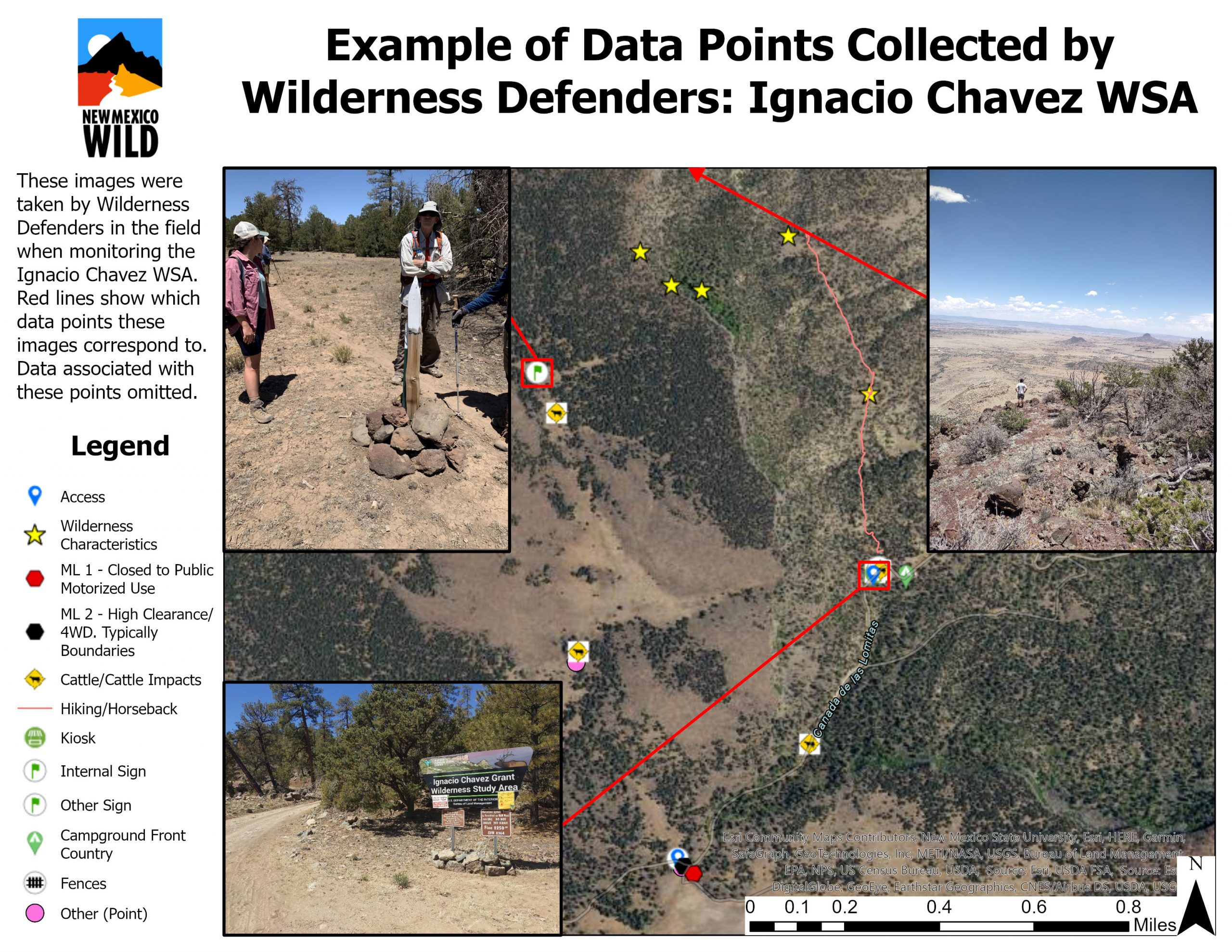By Mike Osborn
Mike, an enrolled member of the Cherokee Nation, is an attorney and retired teacher/counselor, who has lived in and loved New Mexico since 1975.
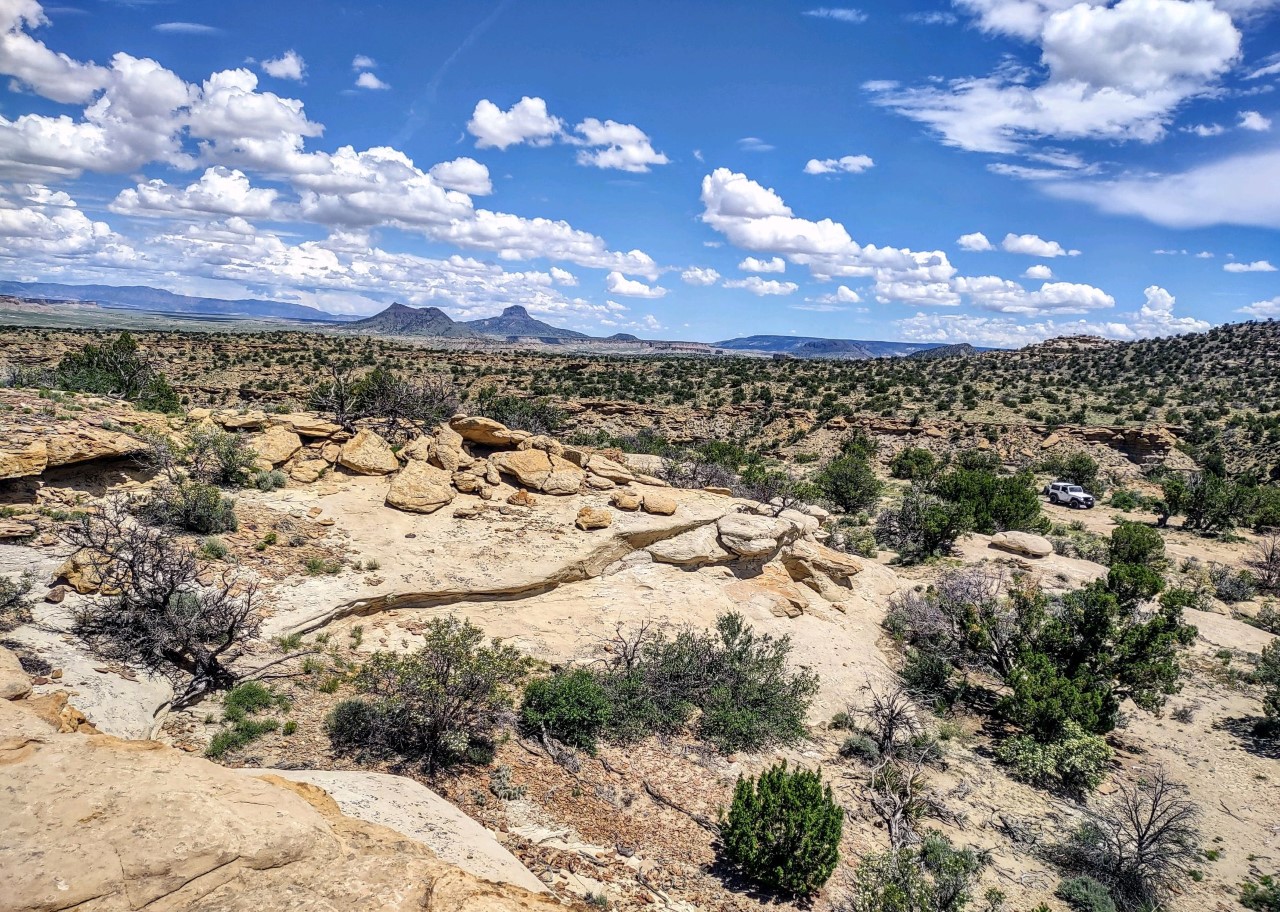
Late at night there is an eerie glow in the southeast coming from the lights of Albuquerque. I was snug in my tent, but still had lingering memories of our encounter that afternoon with a Black-tailed rattlesnake. We were likely pretty safe, since those rattlers are usually not very aggressive and, judging from the bulge in its midsection, it had recently eaten. But it is always worth taking care when exploring out in the Upper Rio Puerco region, especially when your camping spot isn’t too far away from where you saw a venomous pit viper, and the nearest help is miles and miles away.
Seemingly a world away, but really only some 50 air miles northwest of Albuquerque, lies this sprawling landscape of stark beauty and remoteness, an area that rivals any overseen by the Bureau of Land Management in New Mexico. It’s the Boca del Oso (Bear’s Mouth) Wilderness Complex, named for an 8,000 foot promontory atop heavily forested Mesa Chivato, a giant pile of lava that overlooks thousands of square miles of New Mexico backcountry. It has a see-forever panorama that stretches from Mt. Taylor to the Sandias, from the Jemez Mountains to Chaco Mesa. There are also magnificent views of Cabezon and many other many enormous volcanic plugs, remnants of volcanoes and the stuff of many legends, familiar to travelers looking west from US HWY 550 between San Ysidro and Cuba.
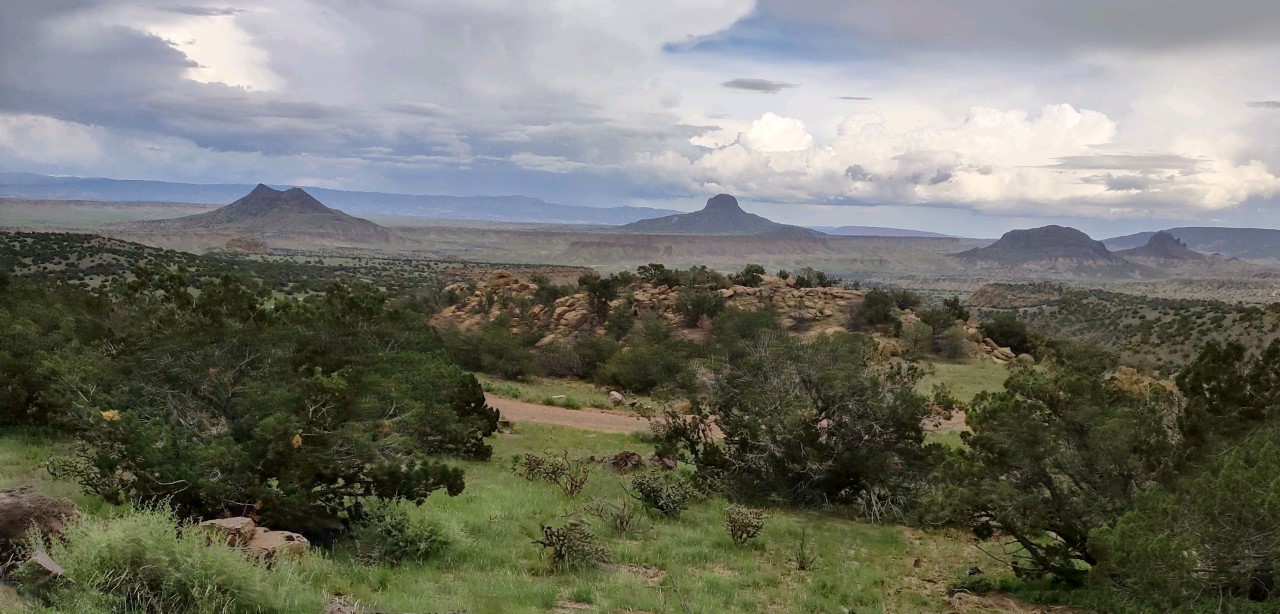
Like the better-known Bear’s Ears (Orejas del Oso) in Utah, the Boca del Oso Wilderness Complex is a stunning landscape sacred to its original inhabitants. To this day parts of it remain closed at certain times of the year to allow privacy for religious practices. Nearby pueblos also regard much of this area as ancestral homelands. It encompasses nearly 100,000 acres of proposed wilderness, much of it part of the Ignacio Chavez Land Grant of 1768. That grant was an attempt by the Spanish government to establish outlying communities in the area, but water was too scarce and the land too harsh, so the area wasn’t really settled until the late 1800s. Then, however, after decades of drought and overgrazing, along with erosion and lowering of the water table, most of this grant land was transferred to the Department of Agriculture and later to the Bureau of Land Management.
Heavy handed federal policies of forced livestock reduction in the 1930s fueled resentments that continue today. Many families still treasure their connection to the area, and though most have moved to cities for better opportunities, many often visit the ‘old country’ to celebrate a lifestyle still largely built on subsistence farming and cattle ranching. Fascinating stories about the pioneers of the area are told by noted folklorist Dr. Nasario Garcia. He grew up at the base of Mesa Chivato in the tiny community of Ojo del Padre/Guadalupe, now with only the ruins of a store and a few homes slowly melting back into the land.
In 1991, with the assistance of the New Mexico BLM Wilderness Coalition led by Jim Fish and his group of “Cabezon Coyotes,” a multiyear statewide review process resulted in the BLM formally recommending over 70,000 acres to establish the Boca del Oso Wilderness, nearly a square mile of it was proposed as a parking/staging area and campground. But since it takes an act of Congress to create a formal wilderness and Congress never acted, the Boca del Oso Complex today remains a collection of Wilderness Study Areas, with much of it in Special Management Area status. Parts of the San Luis WSA, along with most of Tapia Canyon adjacent to the Chamisa WSA, are also classified as Areas of Critical Environmental Concern for raptors and cultural resource protection.
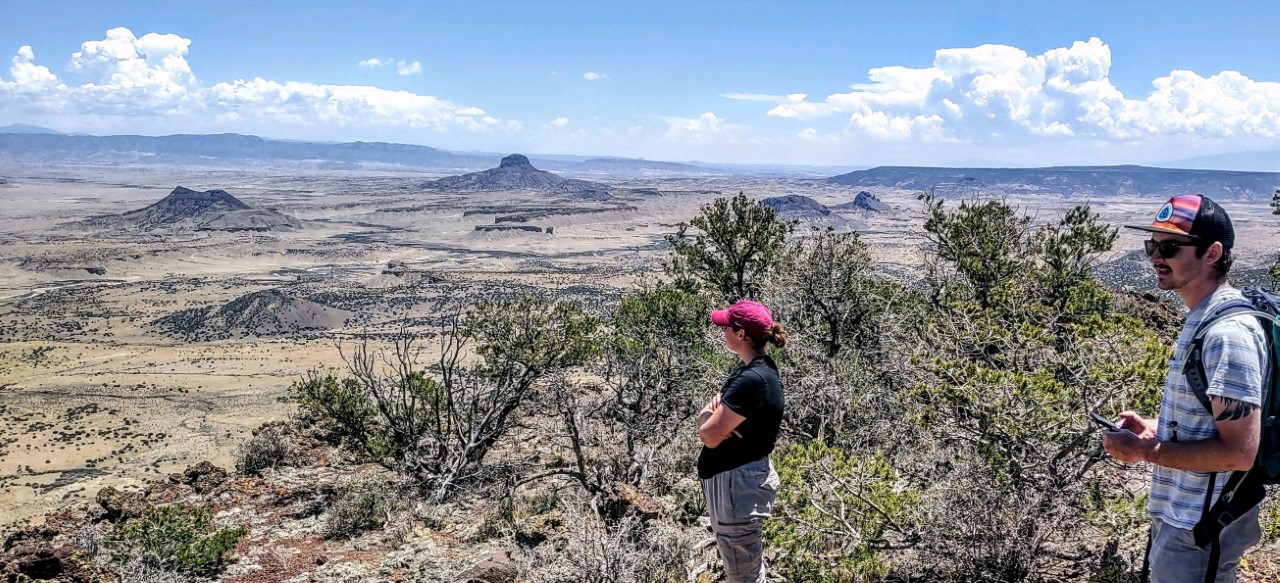
New Mexico Wild has a new grassroots program to protect sensitive public lands such as these in New Mexico. It is called the “Wilderness Defenders” program, and folks like you and me have been recruited to develop a relationship with their chosen areas and to help monitor wilderness values and conditions. Having been introduced to the Boca Del Oso in the early 1980s by Jim Fish, this was my obvious pick. I’ve hiked, camped, and explored many parts of this stunning Complex, which include Ignacio Chavez, Empedrado, Chamisa, La Lena, and San Luis Wilderness Study Areas. New Mexico Wild has recommended that two other roadless areas, Mesa Crotal and Cerro Cuate, be included for wilderness conservation.
It has also been recommended that nearby Guadalupe Canyon and the surrounding Banco Breaks, a nearly 20,000 acre roadless area mostly in the Cibola National Forest, be included in any possible wilderness designation. Banco Breaks has perhaps some of the most extraordinary variety of landscapes in the area. It also arguably has some of the most culturally significant resources, including Tapia Canyon which has a sizeable collection of petroglyphs, ruins, and even a long slot canyon with an arch.
Other nearby wonders include the elusive Banco de la Casa/Big Bead Mesa, which is on the National Register of Historic Places. It is a well-guarded secret, with the ruins of centuries old hogans and defensive fortifications on top of a narrow mesa that juts out from Mesa Chivato. And then there is County Road 25, encircling Mesa Chavez on the north, which contains another historical treasure of the area: the well-preserved ruins of the Star Line Stage stop below Azabache Mesa. This place for a meal, a bed, and a change of horses was a welcome pause in the stagecoach journey on the tortuous trail that carried passengers and US mail from Santa Fe to Fort Wingate in the late 1800s.
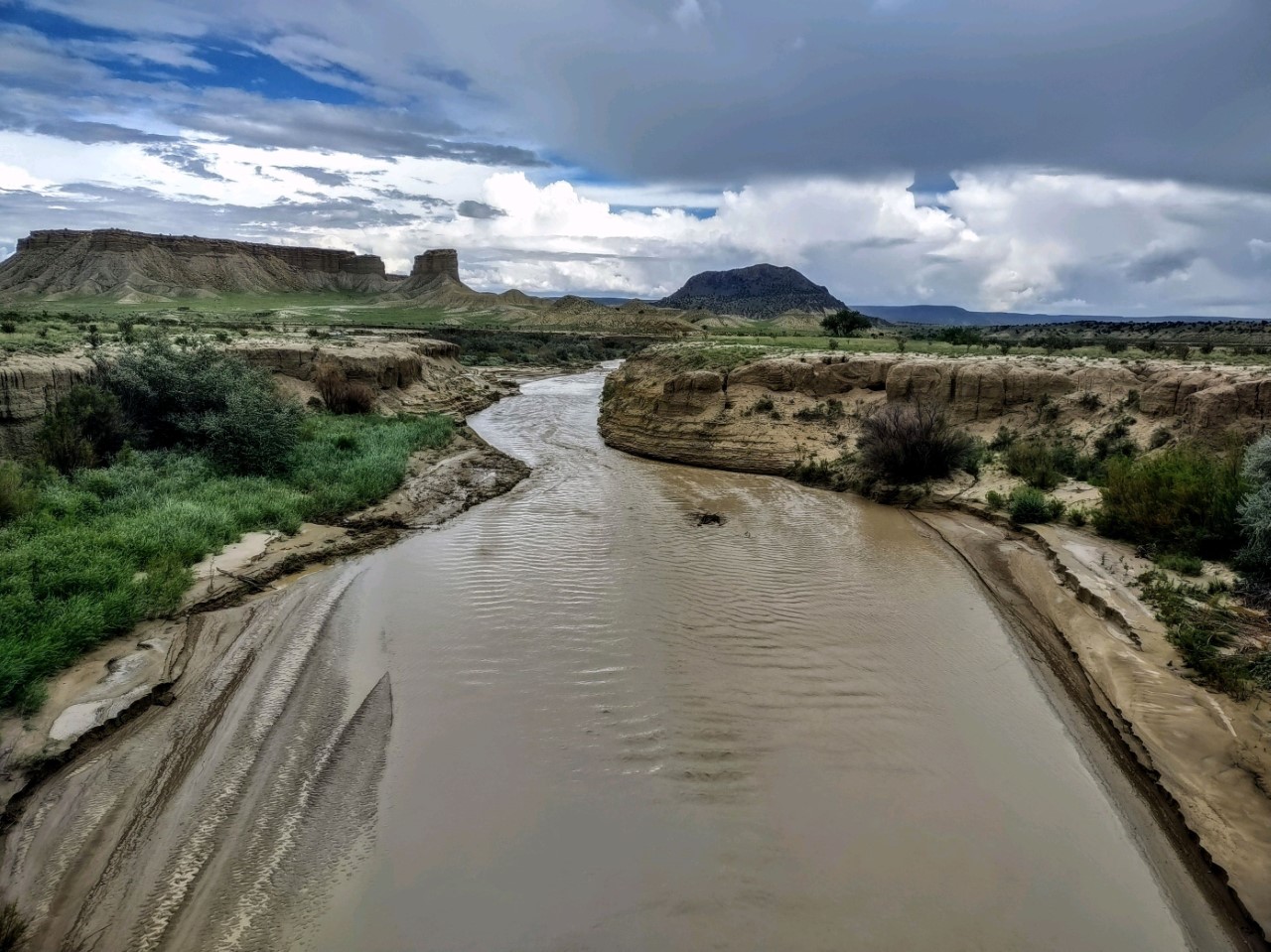
Just down the road from Banco Breaks is Guadalupe Ruin, a well preserved Chacoan Outlier, with yet another incredible view of a long stretch of Boca del Oso country. It sits on what Dr. Nasario Garcia calls Mesa Encantada, a place he was told as a child was a place where witches were said to take naughty children. In a series of fascinating interviews, he documented the lives of many Hispano pioneers in the area, and also wrote Hoe, Heaven, and Hell, an excellent autobiography of his life growing up in the Rio Puerco Valley in the 1940s and ‘50s.
Hunting, especially for wild turkey, is a popular activity up on Mesa Chivato. Other wildlife encounters, though rare, include seeing deer, elk, bobcats, coyotes, mountain lions, bears, as well as Diamondback and other rattlesnakes. Additionally, nearly ubiquitous cliffs in the San Luis WSA and riparian areas like those along Arroyo Chico have abundant birdlife such as golden eagles, turkey vultures, kestrals, sharp-shinned and red-tailed hawks, falcons, and owls. This is a highly scenic wonderland, but also a harsh and unforgiving environment.
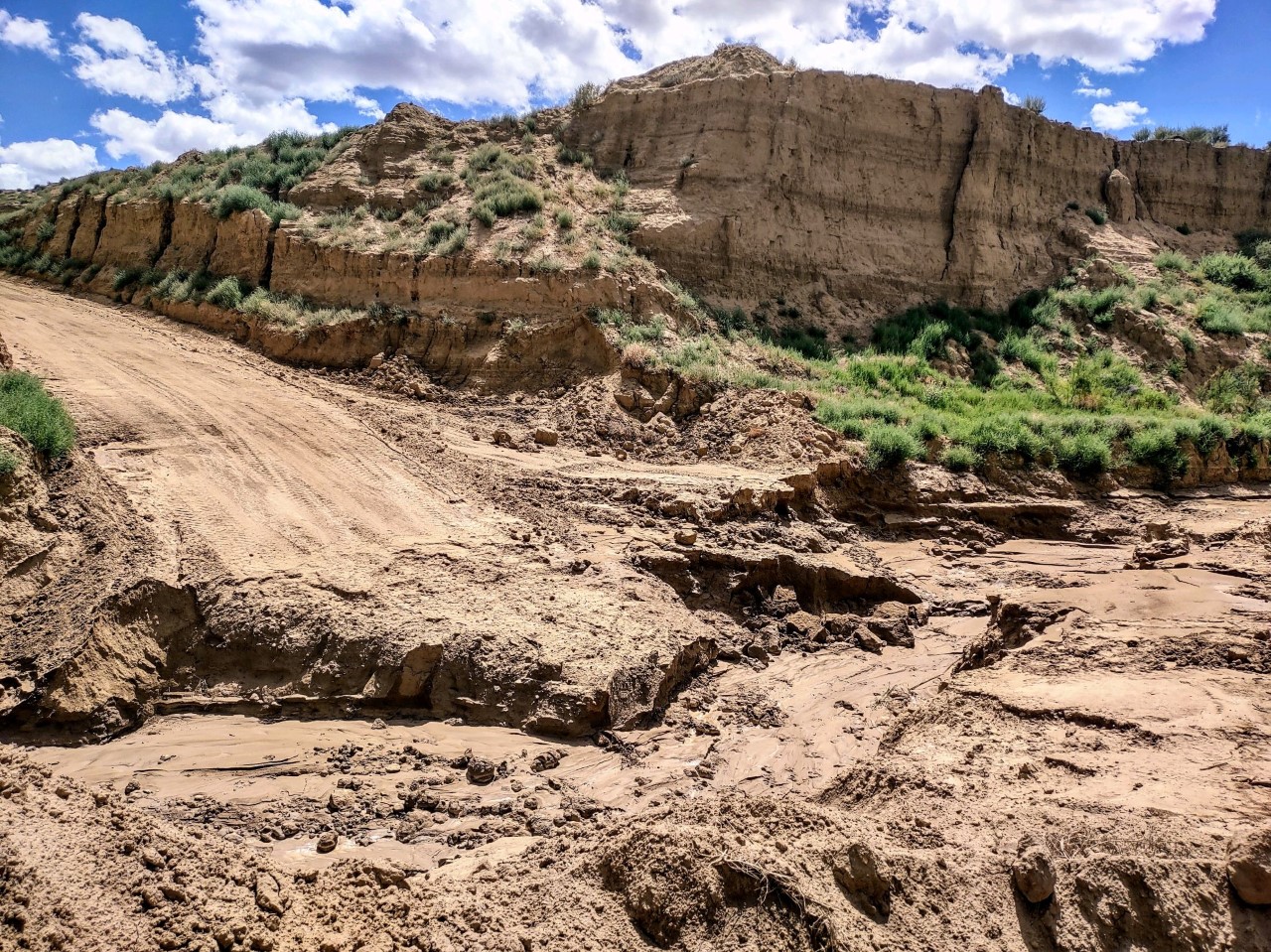
Before heading out there, consider some safety precautions beginning with making sure you have a full tank of gas. Take plenty of water since it is very scarce and should always be treated. It can only be found in a few springs and ephemeral tanks, used primarily by cattle and hikers on the Continental Divide Trail which cuts through the area. Take boots, sunscreen, a shovel, a good jack/spare tire and basic tools for your car. In my last two visits to the area, on Saturdays in the middle of the summer, I only saw a half dozen other visitors, often too far away to be of much assistance. Road washouts are also common during monsoon season, stopping my last jeep tour of the area in its tracks. Lastly, beware of low-lying areas of Mancos Shale, the most slippery, gooey mess imaginable that can sink even a 4-wheel drive vehicle up to its axles.
Directions, along with a lot of other good information about this fascinating area can be found in the 2nd Edition of the Wild Guide Passport, published by New Mexico Wild and also available on the web. A great quote from it is a fitting conclusion here: “A small cadre of hikers has not forgotten this place . . . For those who know about it, the Rio Puerco area (has) become a special, private wilderness, just a short drive from Albuquerque.”
Click here to learn more about the New Mexico Wild Wilderness Defenders program and how you, too, can become a Wilderness Defender.

